Lecture Notes in Mathematics
Editors:
J.-M. Morel, Cachan
F. Takens, Groningen
B. Teissier, Paris
�
C.I.M.E. means Centro Internazionale Matematico Estivo, that is, International Mathematical Summer
Center. Conceived in the early fifties, it was born in 1954 and made welcome by the world mathematical
community where it remains in good health and spirit. Many mathematicians from all over the world
have been involved in a way or another in C.I.M.E.’s activities during the past years.
So they already know what the C.I.M.E. is all about. For the benefit of future potential users and co-
operators the main purposes and the functioning of the Centre may be summarized as follows: every
year, during the summer, Sessions (three or four as a rule) on different themes from pure and applied
mathematics are offered by application to mathematicians from all countries. Each session is generally
based on three or four main courses (− hours over a period of - working days) held from
specialists of international renown, plus a certain number of seminars.
A C.I.M.E. Session, therefore, is neither a Symposium, nor just a School, but maybe a blend of both.
The aim is that of bringing to the attention of younger researchers the origins, later developments, and
perspectives of some branch of live mathematics.
The topics of the courses are generally of international resonance and the participation of the courses
cover the expertise of different countries and continents. Such combination, gave an excellent opportu-
nity to young participants to be acquainted with the most advance research in the topics of the courses
and the possibility of an interchange with the world famous specialists. The full immersion atmosphere
of the courses and the daily exchange among participants are a first building brick in the edifice of
international collaboration in mathematical research.
C.I.M.E. Director
Pietro ZECCA
Dipartimento di Energetica “S. Stecco”
Università di Firenze
Via S. Marta, 3
50139 Florence
Italy
e-mail: zecca@unifi.it
C.I.M.E. Secretary
Elvira MASCOLO
Dipartimento di Matematica
Università di Firenze
viale G.B. Morgagni 67/A
50134 Florence
Italy
e-mail: mascolo@math.unifi.it
For more information see CIME’s homepage: http://www.cime.unifi.it
CIME’s activity is supported by:
– Istituto Nationale di Alta Mathematica “F. Severi”
– Ministero dell’Istruzione, dell’Università e delle Ricerca
�
Daniele Boffi · Franco Brezzi
Leszek F. Demkowicz · Ricardo G. Durán
Richard S. Falk · Michel Fortin
Mixed Finite Elements,
Compatibility Conditions,
and Applications
Lectures given at the
C.I.M.E. Summer School
held in Cetraro, Italy
June –July ,
Editors:
Daniele Boffi
Lucia Gastaldi
123
�
and Istituto di Matematica Applicata e
Tecnologie Informatiche del C.N.R.
Via Ferrata 3, 27100 Pavia, Italy
brezzi@imati.cnr.it
http://www.imati.cnr.it/∼brezzi
Leszek F. Demkowicz
Institute for Computational Engineering
and Sciences
Daniele Boffi
Dipartimento di Matematica
Università degli studi di Pavia
Via Ferrata 1, 27100 Pavia, Italy
daniele.boffi@unipv.it
http://www-dimat.unipv.it/boffi
Franco Brezzi
Istituto Universitario di Studi Superiori (IUSS)
The University of Texas at Austin
ACES 6.332, 105
Austin, TX 78712, USA
leszek@ices.utexas.edu
http://users.ices.utexas.edu/∼leszek
Ricardo G. Durán
Departamento de Matemática
Facultad de Ciencias Exactas y Naturales
Universidad de Buenos Aires
Ciudad Universitaria. Pabellón I
1428 Buenos Aires, Argentina
rduran@dm.uba.ar
http://mate.dm.uba.ar/∼rduran
Richard S. Falk
Department of Mathematics - Hill Center
Rutgers, The State University of New Jersey
110 Frelinghuysen Rd.
Piscataway, NJ 08854-8019, USA
falk@math.rutgers.edu
http://www.math.rutgers.edu/∼falk
Michel Fortin
Département de mathématiques
et de statistique
Pavillon Alexandre-Vachon
Université Laval
1045, avenue de la Médecine
Québec (Québec)
G1V 0A6, Canada
mfortin@giref.ulaval.ca
http://www.mat.ulaval.ca
Lucia Gastaldi
Dipartimento di Matematica
Università degli Studi di Brescia
Via Valotti 9
25133 Brescia, Italy
gastaldi@ing.unibs.it
http://dm.ing.unibs.it/gastaldi
ISBN: 978-3-540-78314-5
DOI: 10.1007/978-3-540-78319-0
e-ISBN: 978-3-540-78319-0
Lecture Notes in Mathematics ISSN print edition: 0075-8434
ISSN electronic edition: 1617-9692
Library of Congress Control Number: 2008921921
Mathematics Subject Classification (2000): 65-02, 65N30, 65N12, 35M10, 74S05, 76M10, 78M10,
58A10, 58A12
c 2008 Springer-Verlag Berlin Heidelberg
This work is subject to copyright. All rights are reserved, whether the whole or part of the material is
concerned, specifically the rights of translation, reprinting, reuse of illustrations, recitation, broadcasting,
reproduction on microfilm or in any other way, and storage in data banks. Duplication of this publication
or parts thereof is permitted only under the provisions of the German Copyright Law of September ,
, in its current version, and permission for use must always be obtained from Springer. Violations are
liable to prosecution under the German Copyright Law.
The use of general descriptive names, registered names, trademarks, etc. in this publication does not imply,
even in the absence of a specific statement, that such names are exempt from the relevant protective laws
and regulations and therefore free for general use.
Cover design: WMXDesign GmbH
Printed on acid-free paper
9 8 7 6 5 4 3 2 1
springer.com
�
Preface
This volume is a collection of the notes of the C.I.M.E. course “Mixed finite ele-
ments, compatibility conditions, and applications” held in Cetraro (CS), Italy, from
June 26 to July 1, 2006.
Since the early 1970s, mixed finite elements have been the object of wide and
deep study by the mathematical and engineering communities. The fundamental role
of mixed methods for many application fields has been recognized worldwide and
their use has been introduced in several commercial codes. An important feature
of mixed finite elements is the interplay between theory and application: on the
one hand, many schemes used for real life simulations have been cast in a rigor-
ous framework, and on the other, the theoretical analysis makes it possible to design
new schemes or to improve existing ones, based on their mathematical properties.
Indeed, due to the compatibility conditions required by the discretization spaces to
provide stable schemes, simple minded approximations generally do not work and
the design of suitable stabilizations gives rise to challenging mathematical problems.
The course had two main goals. The first one was to review the rigorous setting
of mixed finite elements and to revisit it after more than 30 years of practice; this
resulted in developing a detailed a priori and a posteriori analysis. The second one
was to show some examples of possible applications of the method.
We are confident this book will serve as a basic reference for people exploring
the field of mixed finite elements. This “Lecture Notes” cover the theory of mixed
finite elements and applications to Stokes problem, elasticity, and electromagnetism.
Ricardo G. Dur´an had the responsibility of reviewing the general theory. He
started with the description of the mixed approximation of second-order elliptic prob-
lems (a priori and a posteriori estimates) and then extended the theory to general
mixed problems, thus leading to the famous inf–sup conditions.
The second course on Stokes problem has been given by Daniele Boffi, Franco
Brezzi, and Michel Fortin. From the basic application of the inf–sup theory to the
linear Stokes system, stable Stokes finite elements have been analyzed, and general
stabilization techniques have been described. Finally, some results on visco-elasticity
have been presented.
�
VI
Preface
Richard S. Falk has dealt with the mixed finite element approximation of the
elasticity problem and, more particularly, of the Reissner–Mindlin plate problem.
The corresponding notes are split into two parts: in the first one, recent results linking
the de Rham complex to finite element schemes have been reviewed; in the second,
classical Reissner–Mindlin plate elements have been presented, together with some
discussion on quadrilateral meshes.
Leszek Demkowicz has given a general introduction to the exact sequence (de
Rham complex) topic, which turns out to be a fundamental tool for the construction
and analysis of mixed finite elements, and for the approximation of problems arising
from electromagnetism. The results presented here use special characterization of
traces for vector-valued functions in Sobolev spaces.
We thank all the lecturers and, in particular, Franco Brezzi, who laid the foun-
dation for the analysis of mixed finite elements, for his active participation in this
C.I.M.E. course.
Daniele Boffi, Pavia
Lucia Gastaldi, Brescia
�
Contents
Preface . . . . . . . . . . . . . . . . . . . . . . . . . . . . . . . . . . . . . . . . . . . . . . . . . . . . . . . . . . . . V
Mixed Finite Element Methods
Ricardo G. Dur´an . . . . . . . . . . . . . . . . . . . . . . . . . . . . . . . . . . . . . . . . . . . . . . . . .
1 Introduction . . . . . . . . . . . . . . . . . . . . . . . . . . . . . . . . . . . . . . . . . . . . . . . . . . . . .
2 Preliminary Results . . . . . . . . . . . . . . . . . . . . . . . . . . . . . . . . . . . . . . . . . . . . . . .
3 Mixed Approximation of Second Order Elliptic Problems . . . . . . . . . . . . . . .
4 A Posteriori Error Estimates . . . . . . . . . . . . . . . . . . . . . . . . . . . . . . . . . . . . . . . .
5 The General Abstract Setting . . . . . . . . . . . . . . . . . . . . . . . . . . . . . . . . . . . . . . .
References . . . . . . . . . . . . . . . . . . . . . . . . . . . . . . . . . . . . . . . . . . . . . . . . . . . . . . . . .
1
1
2
8
25
34
42
Finite Elements for the Stokes Problem
Daniele Boffi, Franco Brezzi, and Michel Fortin . . . . . . . . . . . . . . . . . . . . . . . . . 45
45
1 Introduction . . . . . . . . . . . . . . . . . . . . . . . . . . . . . . . . . . . . . . . . . . . . . . . . . . . . .
2 The Stokes Problem as a Mixed Problem . . . . . . . . . . . . . . . . . . . . . . . . . . . . .
46
46
2.1 Mixed Formulation . . . . . . . . . . . . . . . . . . . . . . . . . . . . . . . . . . . . . . . . . . .
50
3 Some Basic Examples . . . . . . . . . . . . . . . . . . . . . . . . . . . . . . . . . . . . . . . . . . . . .
56
4 Standard Techniques for Checking the Inf–Sup Condition . . . . . . . . . . . . . . .
4.1 Fortin’s Trick . . . . . . . . . . . . . . . . . . . . . . . . . . . . . . . . . . . . . . . . . . . . . . . .
56
57
4.2 Projection onto Constants . . . . . . . . . . . . . . . . . . . . . . . . . . . . . . . . . . . . . .
4.3 Verf¨urth’s Trick . . . . . . . . . . . . . . . . . . . . . . . . . . . . . . . . . . . . . . . . . . . . . .
58
60
4.4 Space and Domain Decomposition Techniques . . . . . . . . . . . . . . . . . . . .
61
4.5 Macroelement Technique . . . . . . . . . . . . . . . . . . . . . . . . . . . . . . . . . . . . . .
4.6 Making Use of the Internal Degrees of Freedom . . . . . . . . . . . . . . . . . . .
63
66
5 Spurious Pressure Modes . . . . . . . . . . . . . . . . . . . . . . . . . . . . . . . . . . . . . . . . . .
69
6 Two-Dimensional Stable Elements . . . . . . . . . . . . . . . . . . . . . . . . . . . . . . . . . .
6.1 The MINI Element . . . . . . . . . . . . . . . . . . . . . . . . . . . . . . . . . . . . . . . . . . .
69
6.2 The Crouzeix–Raviart Element . . . . . . . . . . . . . . . . . . . . . . . . . . . . . . . . .
70
− P0 Approximation . . . . . . . . . . . . . . . . . . . . . . . . . . . . . . . . . . . .
71
6.3 P N C
6.4 Qk − Pk−1 Elements . . . . . . . . . . . . . . . . . . . . . . . . . . . . . . . . . . . . . . . . .
72
1
�
VIII
Contents
7 Three-Dimensional Elements . . . . . . . . . . . . . . . . . . . . . . . . . . . . . . . . . . . . . . .
7.1 The MINI Element . . . . . . . . . . . . . . . . . . . . . . . . . . . . . . . . . . . . . . . . . . .
7.2 The Crouseix–Raviart Element . . . . . . . . . . . . . . . . . . . . . . . . . . . . . . . . .
− P0 Approximation . . . . . . . . . . . . . . . . . . . . . . . . . . . . . . . . . . . .
7.3 P N C
7.4 Qk − Pk−1 Elements . . . . . . . . . . . . . . . . . . . . . . . . . . . . . . . . . . . . . . . . .
8 Pk − Pk−1 Schemes and Generalized Hood–Taylor Elements . . . . . . . . . . . .
8.1 Pk − Pk−1 Elements . . . . . . . . . . . . . . . . . . . . . . . . . . . . . . . . . . . . . . . . .
8.2 Generalized Hood–Taylor Elements . . . . . . . . . . . . . . . . . . . . . . . . . . . . .
1
9 Nearly Incompressible Elasticity, Reduced Integration Methods
and Relation with Penalty Methods . . . . . . . . . . . . . . . . . . . . . . . . . . . . . . . . . .
9.1 Variational Formulations and Admissible Discretizations . . . . . . . . . . .
9.2 Reduced Integration Methods . . . . . . . . . . . . . . . . . . . . . . . . . . . . . . . . . .
9.3 Effects of Inexact Integration . . . . . . . . . . . . . . . . . . . . . . . . . . . . . . . . . . .
10 Divergence-Free Basis, Discrete Stream Functions . . . . . . . . . . . . . . . . . . . . .
11 Other Mixed and Hybrid Methods for Incompressible Flows . . . . . . . . . . . . .
References . . . . . . . . . . . . . . . . . . . . . . . . . . . . . . . . . . . . . . . . . . . . . . . . . . . . . . . . .
73
73
74
74
75
75
75
76
85
85
86
88
92
96
97
Polynomial Exact Sequences and Projection-Based Interpolation
with Application to Maxwell Equations
Leszek Demkowicz . . . . . . . . . . . . . . . . . . . . . . . . . . . . . . . . . . . . . . . . . . . . . . . . 101
1 Introduction . . . . . . . . . . . . . . . . . . . . . . . . . . . . . . . . . . . . . . . . . . . . . . . . . . . . . 101
2 Exact Polynomial Sequences . . . . . . . . . . . . . . . . . . . . . . . . . . . . . . . . . . . . . . . 102
2.1 One-Dimensional Sequences . . . . . . . . . . . . . . . . . . . . . . . . . . . . . . . . . . . 102
2.2 Two-Dimensional Sequences . . . . . . . . . . . . . . . . . . . . . . . . . . . . . . . . . . . 105
3 Commuting Projections and Projection-Based Interpolation Operators
in One Space Dimension . . . . . . . . . . . . . . . . . . . . . . . . . . . . . . . . . . . . . . . . . . . 115
3.1 Commuting Projections: Projection Error Estimates . . . . . . . . . . . . . . . . 115
3.2 Commuting Interpolation Operators: Interpolation Error Estimates . . . 117
3.3 Localization Argument . . . . . . . . . . . . . . . . . . . . . . . . . . . . . . . . . . . . . . . . 125
4 Commuting Projections and Projection-Based Interpolation Operators
in Two Space Dimensions . . . . . . . . . . . . . . . . . . . . . . . . . . . . . . . . . . . . . . . . . . 128
4.1 Definitions and Commutativity . . . . . . . . . . . . . . . . . . . . . . . . . . . . . . . . . 128
4.2 Polynomial Preserving Extension Operators . . . . . . . . . . . . . . . . . . . . . . 131
4.3 Right-Inverse of the Curl Operator: Discrete Friedrichs Inequality . . . . 132
4.4 Projection Error Estimates . . . . . . . . . . . . . . . . . . . . . . . . . . . . . . . . . . . . . 135
4.5 Interpolation Error Estimates . . . . . . . . . . . . . . . . . . . . . . . . . . . . . . . . . . . 137
4.6 Localization Argument . . . . . . . . . . . . . . . . . . . . . . . . . . . . . . . . . . . . . . . . 139
5 Commuting Projections and Projection-Based Interpolation Operators
in Three Space Dimensions . . . . . . . . . . . . . . . . . . . . . . . . . . . . . . . . . . . . . . . . 141
5.1 Definitions and Commutativity . . . . . . . . . . . . . . . . . . . . . . . . . . . . . . . . . 141
5.2 Polynomial Preserving Extension Operators . . . . . . . . . . . . . . . . . . . . . . 145
5.3 Polynomial Preserving, Right-Inverses of Grad, Curl, and Div
Operators: Discrete Friedrichs Inequalities . . . . . . . . . . . . . . . . . . . . . . . 145
5.4 Projection and Interpolation Error Estimates . . . . . . . . . . . . . . . . . . . . . . 149
�
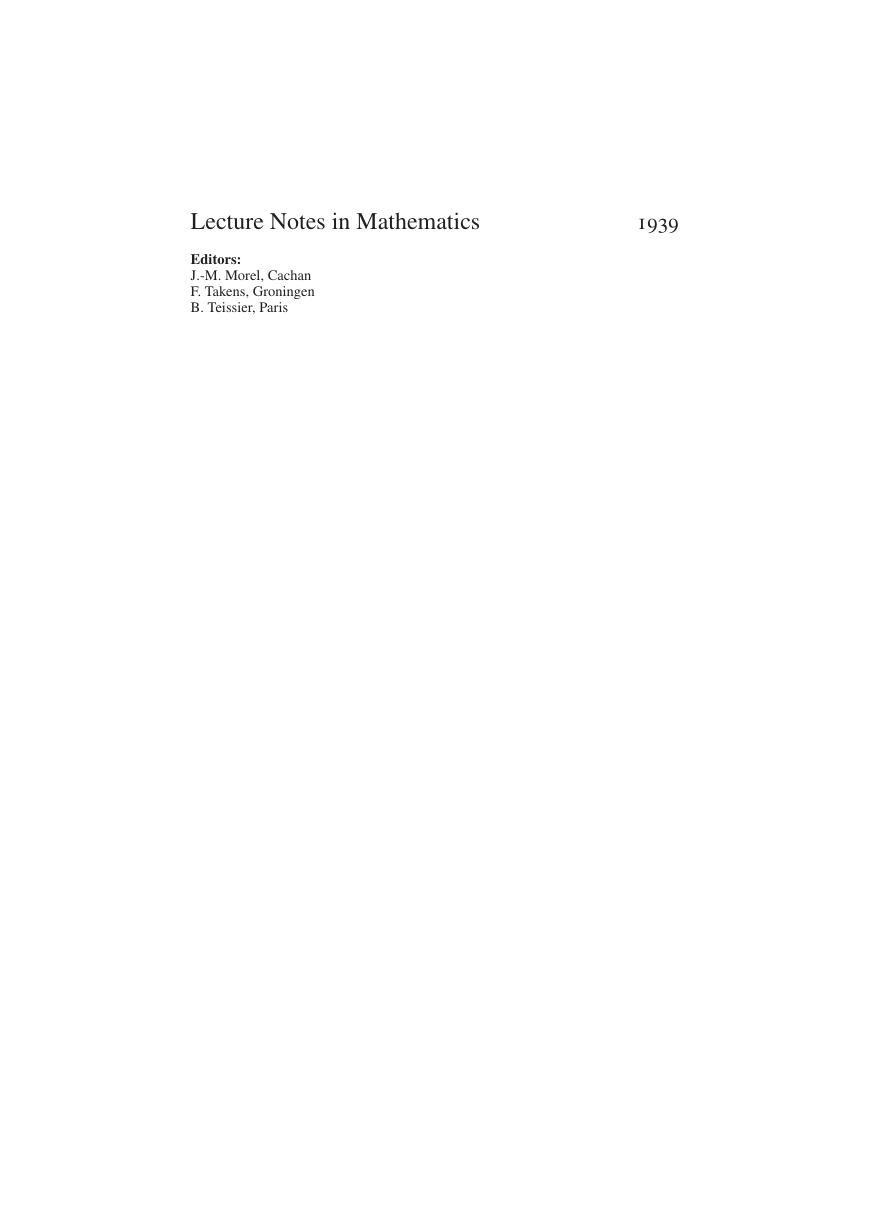
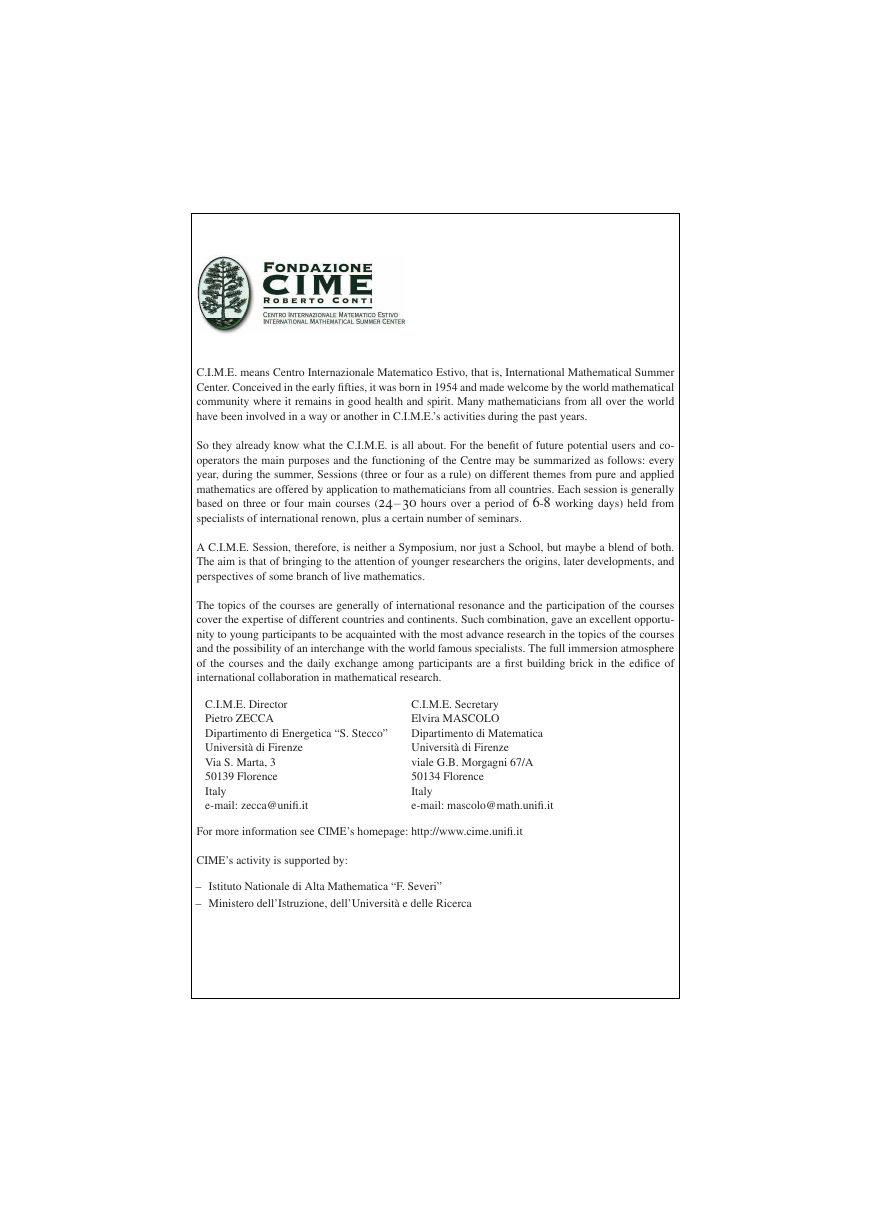

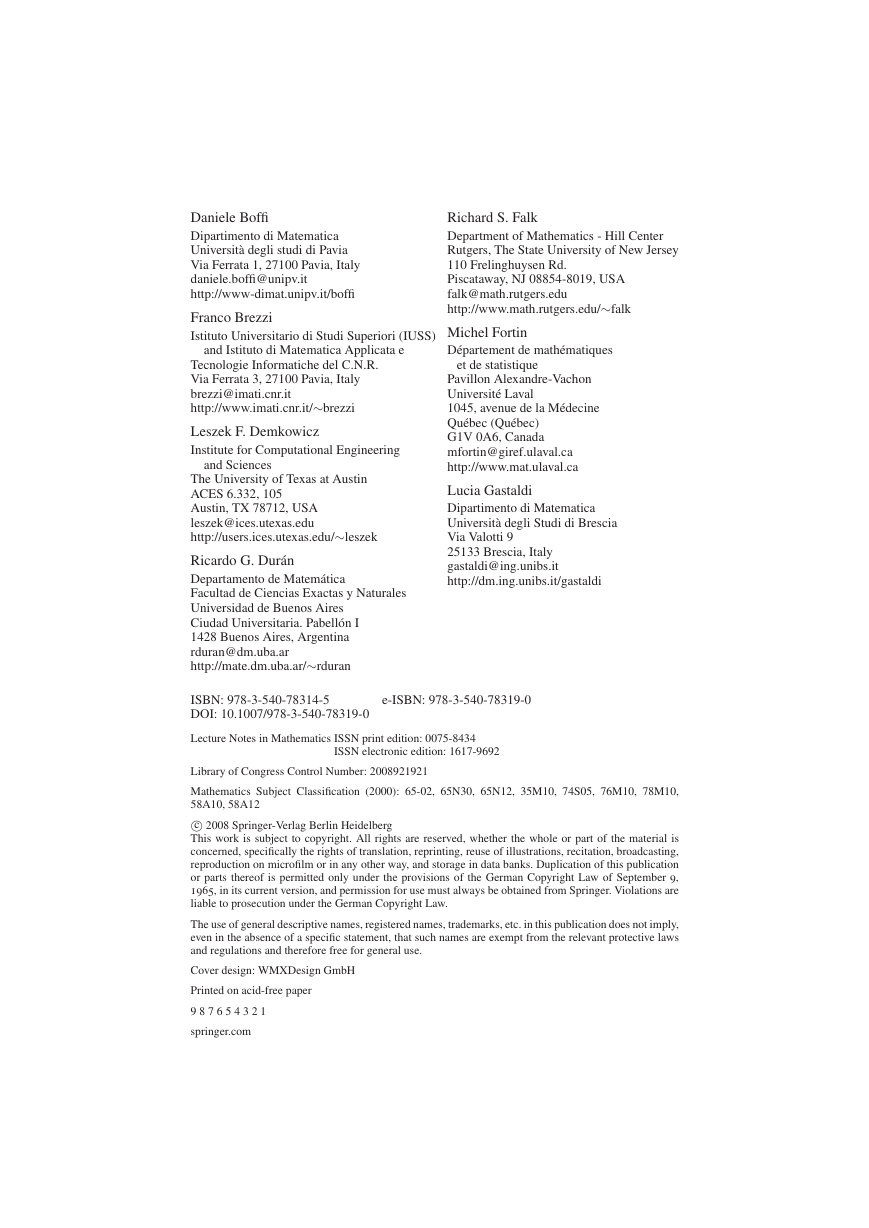
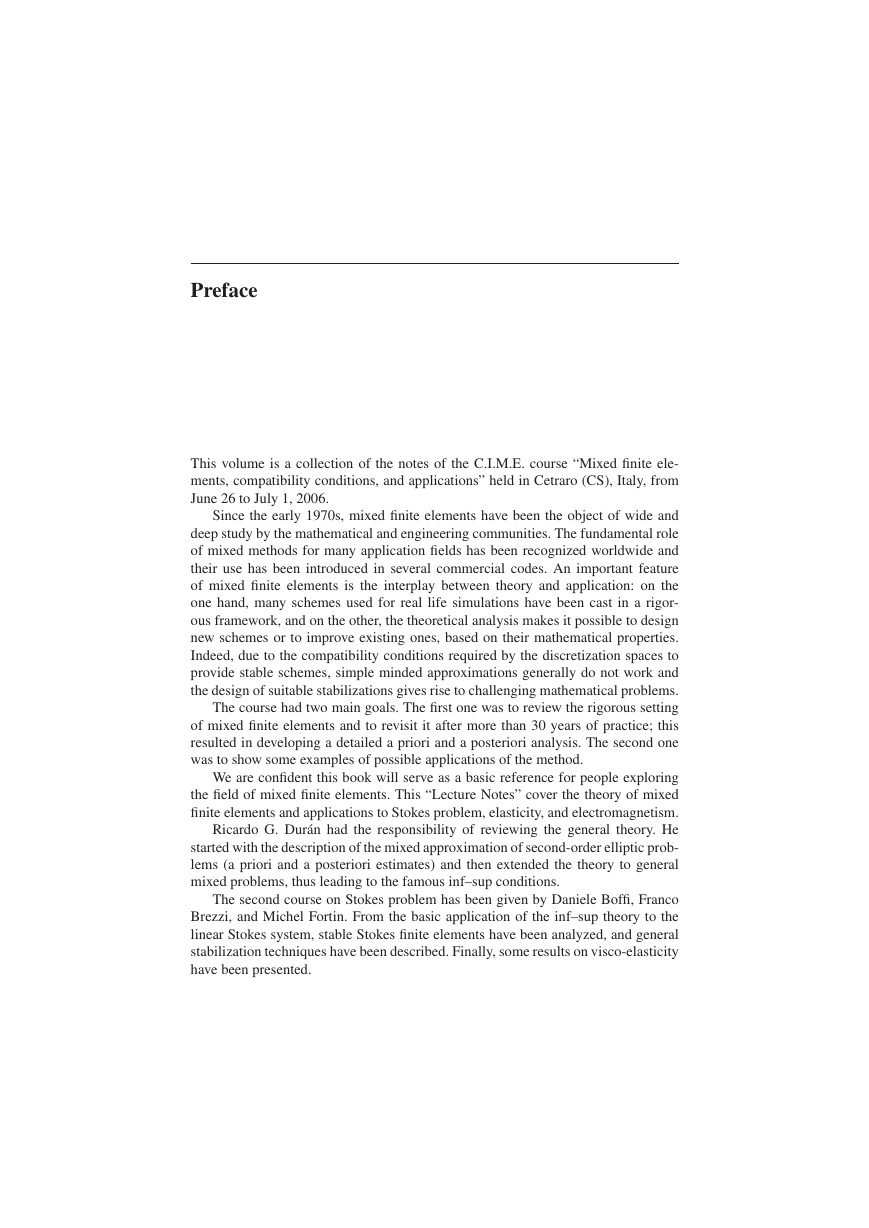
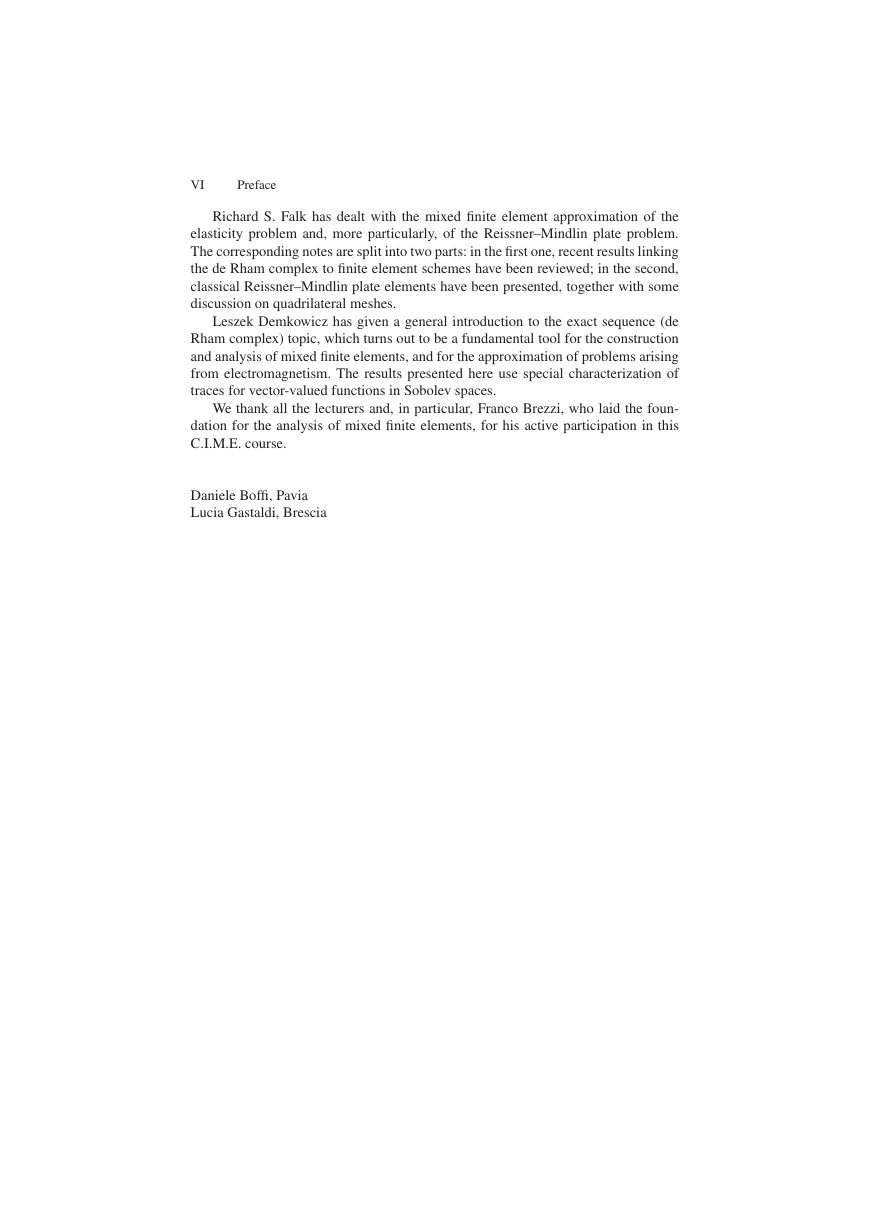
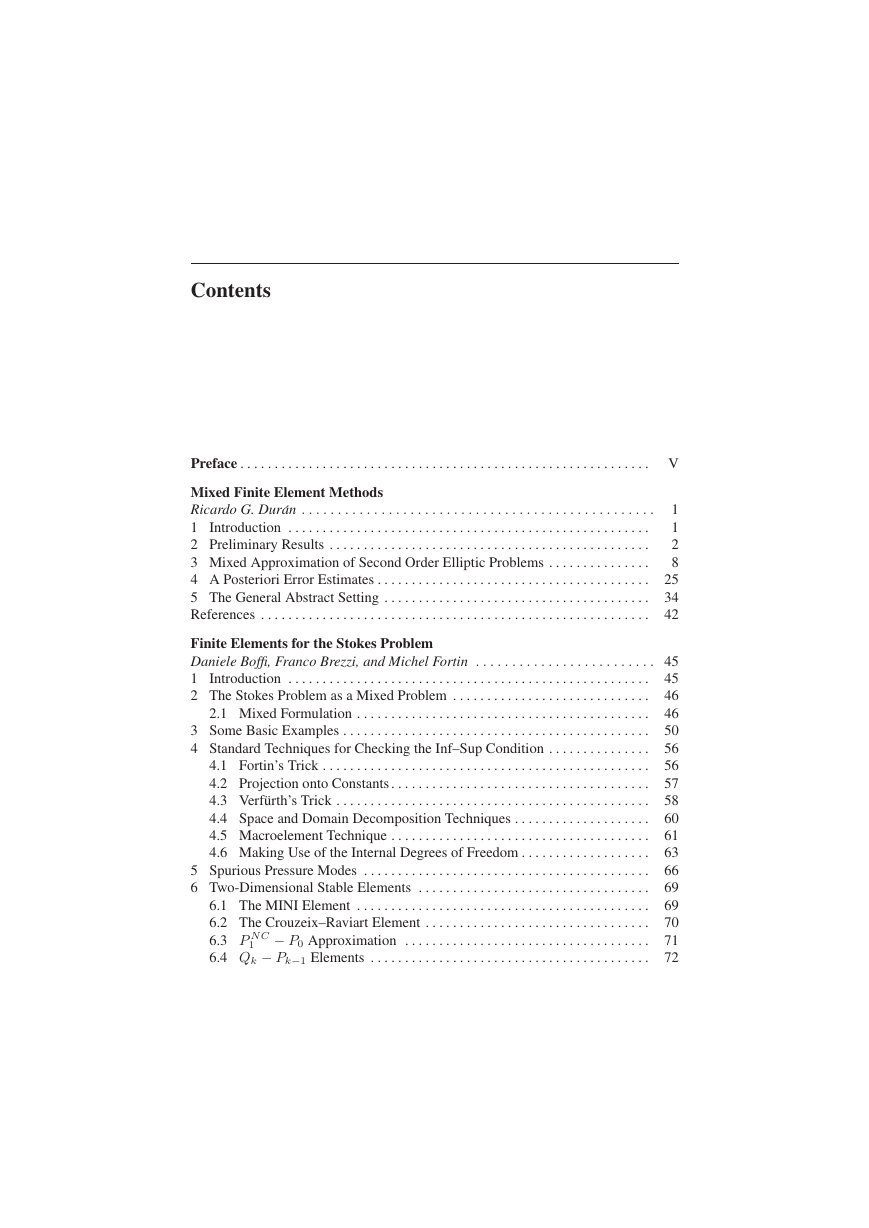
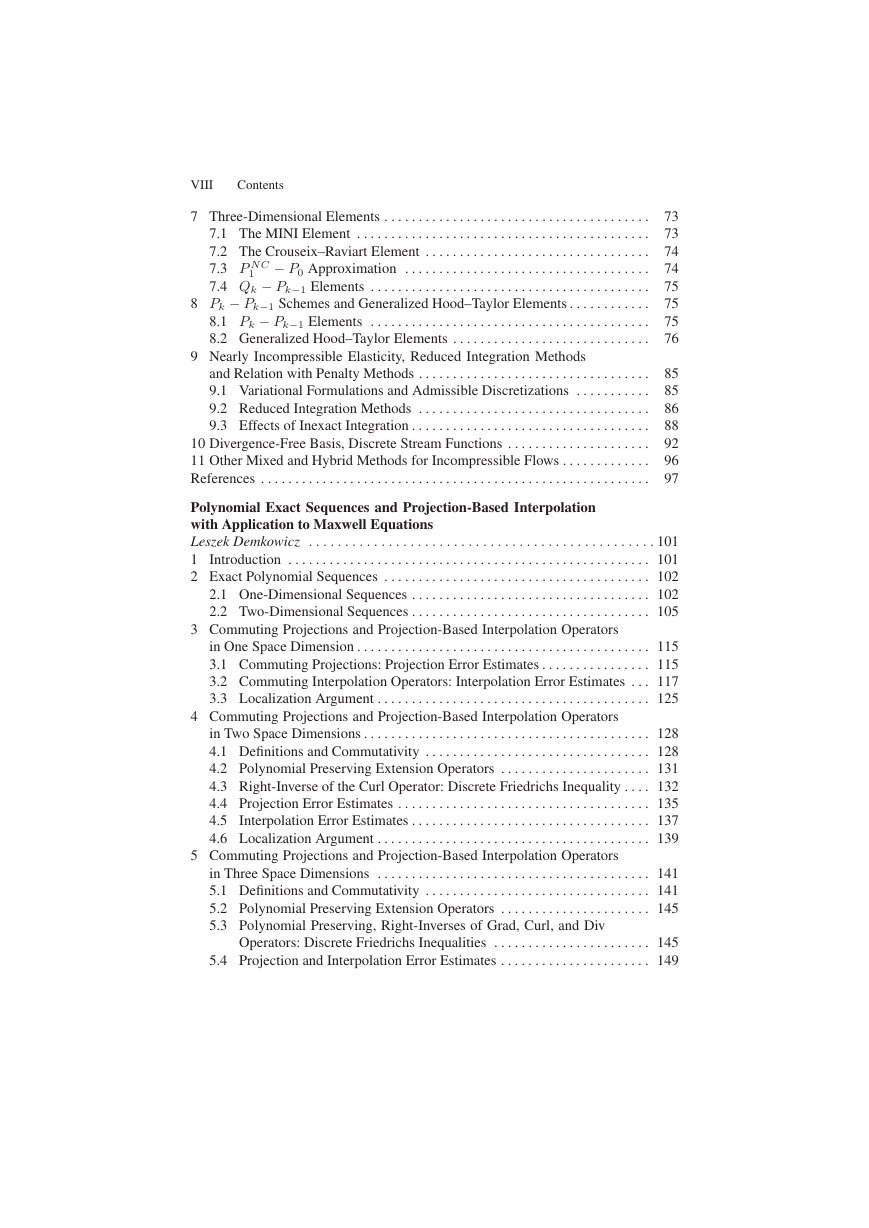








 2023年江西萍乡中考道德与法治真题及答案.doc
2023年江西萍乡中考道德与法治真题及答案.doc 2012年重庆南川中考生物真题及答案.doc
2012年重庆南川中考生物真题及答案.doc 2013年江西师范大学地理学综合及文艺理论基础考研真题.doc
2013年江西师范大学地理学综合及文艺理论基础考研真题.doc 2020年四川甘孜小升初语文真题及答案I卷.doc
2020年四川甘孜小升初语文真题及答案I卷.doc 2020年注册岩土工程师专业基础考试真题及答案.doc
2020年注册岩土工程师专业基础考试真题及答案.doc 2023-2024学年福建省厦门市九年级上学期数学月考试题及答案.doc
2023-2024学年福建省厦门市九年级上学期数学月考试题及答案.doc 2021-2022学年辽宁省沈阳市大东区九年级上学期语文期末试题及答案.doc
2021-2022学年辽宁省沈阳市大东区九年级上学期语文期末试题及答案.doc 2022-2023学年北京东城区初三第一学期物理期末试卷及答案.doc
2022-2023学年北京东城区初三第一学期物理期末试卷及答案.doc 2018上半年江西教师资格初中地理学科知识与教学能力真题及答案.doc
2018上半年江西教师资格初中地理学科知识与教学能力真题及答案.doc 2012年河北国家公务员申论考试真题及答案-省级.doc
2012年河北国家公务员申论考试真题及答案-省级.doc 2020-2021学年江苏省扬州市江都区邵樊片九年级上学期数学第一次质量检测试题及答案.doc
2020-2021学年江苏省扬州市江都区邵樊片九年级上学期数学第一次质量检测试题及答案.doc 2022下半年黑龙江教师资格证中学综合素质真题及答案.doc
2022下半年黑龙江教师资格证中学综合素质真题及答案.doc